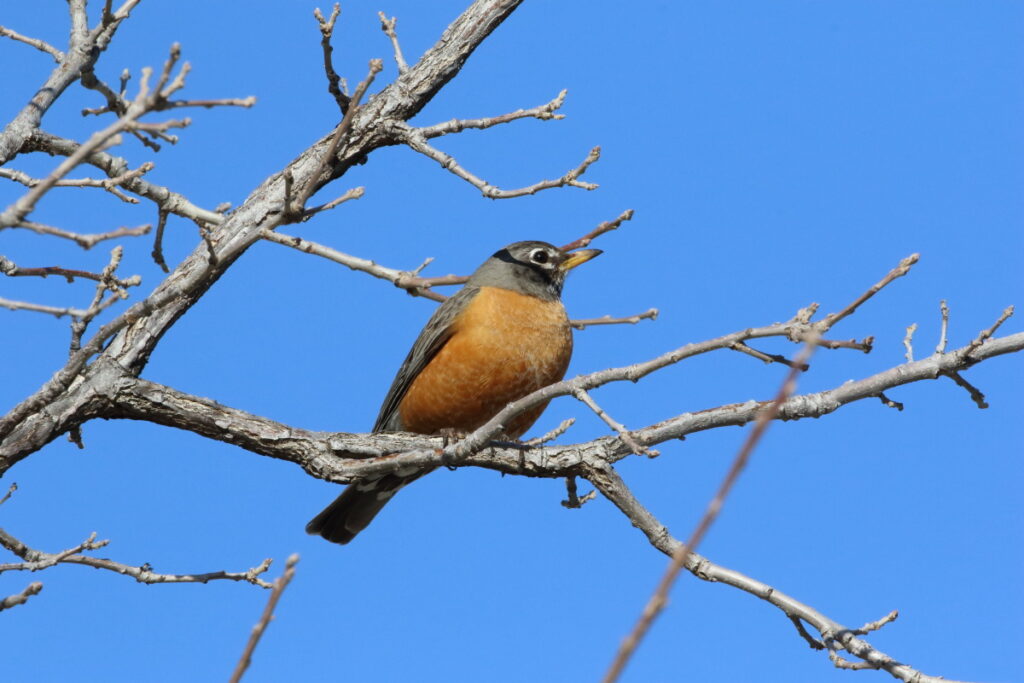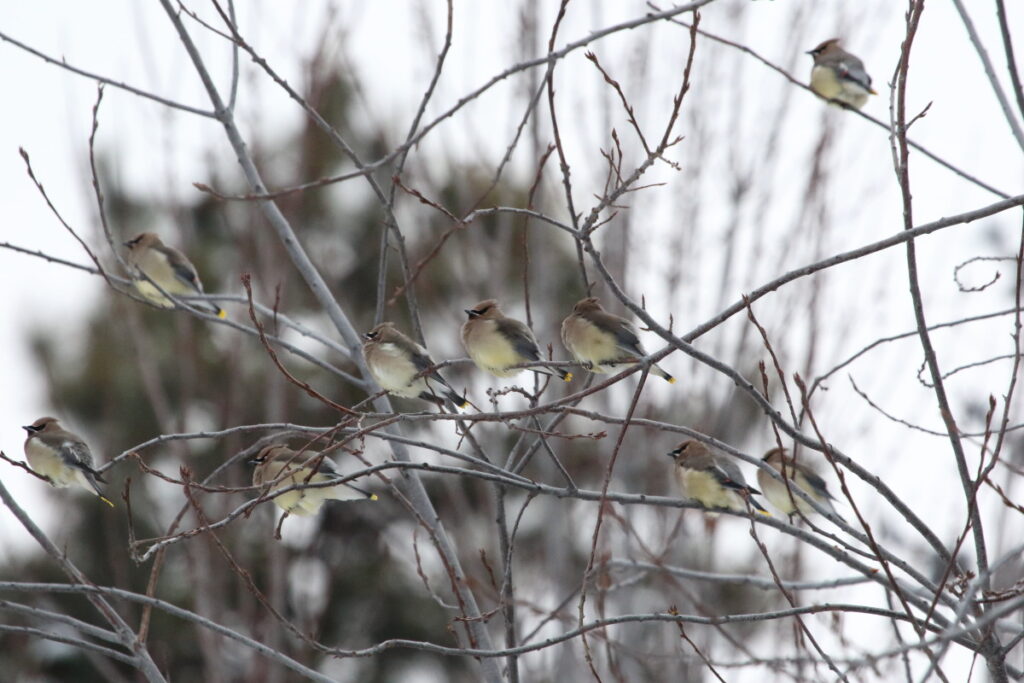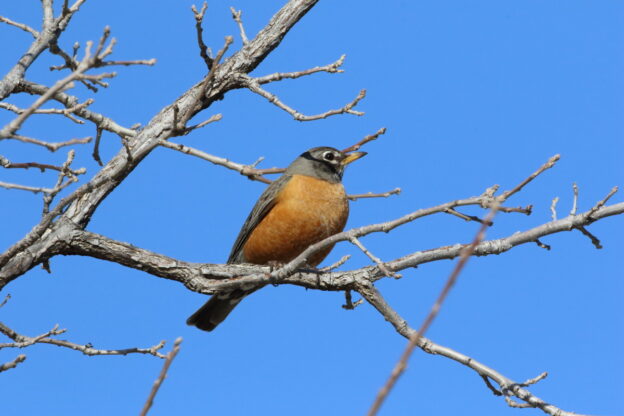This time of year we observe a remarkable influx of American Robins in western Montana. True, the birds are year-round residents in small numbers through much of the state, but by April, instead of spotting the occasional bird, Braden and I begin counting them by the dozens. As much as I love this “thrush flush”, I have to admit it has led to some close calls in bird IDs this past week.

Every morning I grab my binoculars when I head out to take our dog Lola for her morning tramp around our neighborhood. We follow a mile-long route around a school, down to a park, and then back up home, skirting the edges of houses, woods, and Rattlesnake Creek. Over the years, Braden and I have compiled a healthy bird list for the route, but I have to say that it rarely yields any real surprises. As a result, I become lulled into a sense of complacency about what I am looking at.
To wit, with all the robins around lately, I have naturally assumed I am looking at Turdus migratorius when I see medium-sized, nondescript birds perched in a distant tree. On my Wednesday dog walk, I again made those assumptions. I mean, there were a ton of robins about and I identified many by sight and sound. When I saw fifteen birds sitting in another tree, I thought, “More robins.” Fortunately, something made me pause—perhaps my inner birder conscience or a feather that didn’t look quite right. Ignoring Lola’s piercing eyes, which pleaded for me to throw the ball again, I raised my binoculars and found . . .

Cedar Waxwings! “Huh,” I thought. “That’s cool.” Waxwings weren’t earth-shattering, but I didn’t expect to see such a group this time of year. I threw the ball for Lola and continued walking, and a hundred yards later saw another group of birds in a tree. “More robins,” I thought, then remembered the waxwings and again raised my binoculars to find . . .
Evening Grosbeaks! Even better, it was my first good look at them for the year! Those two back-to-back sightings taught me a valuable birding lesson: never assume what you’re looking at just because certain birds are more common or you’ve seen them before. I hope it’s a lesson that will serve you well this spring—not that there’s anything wrong with robins.



